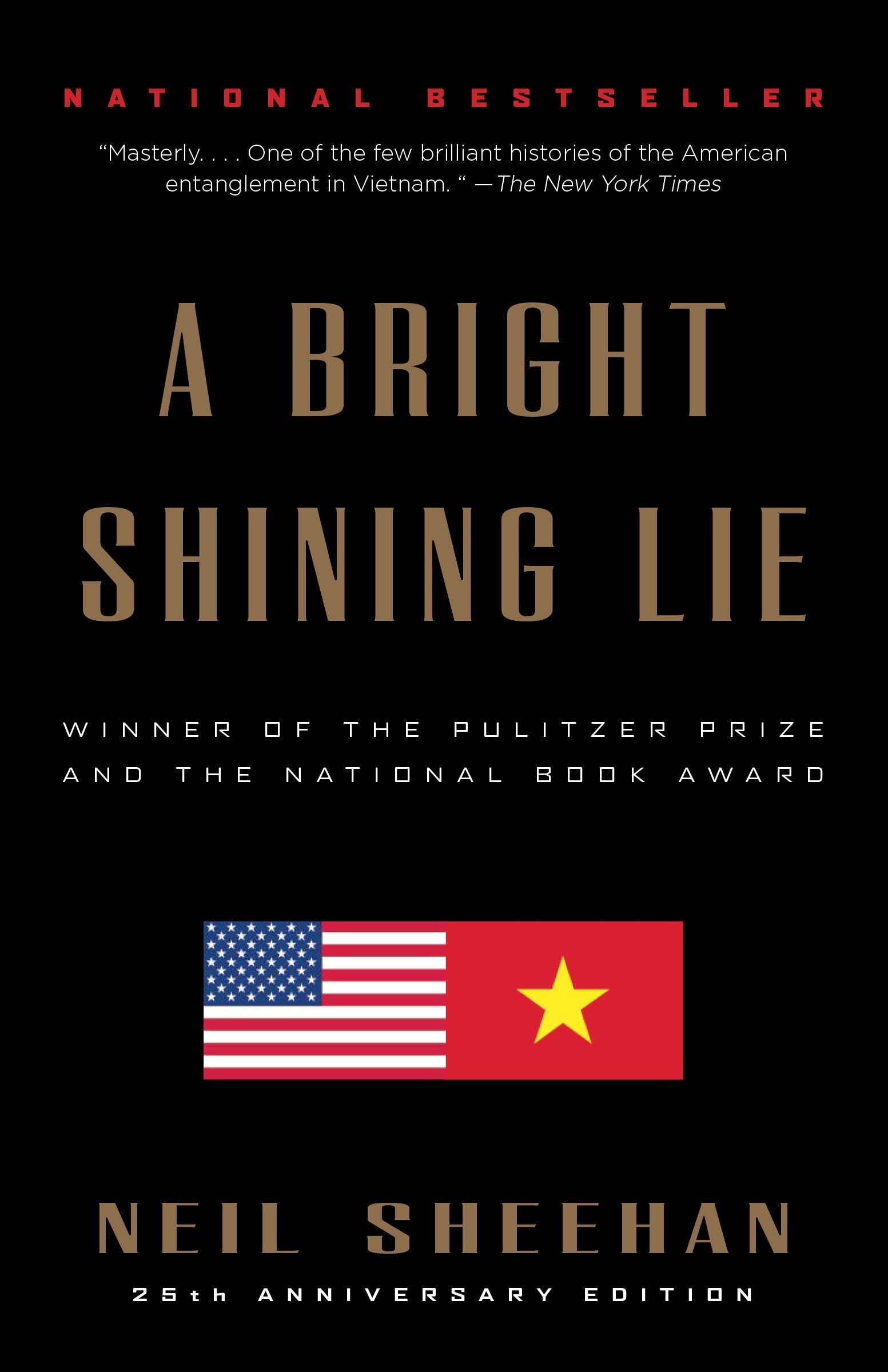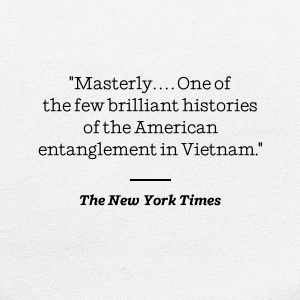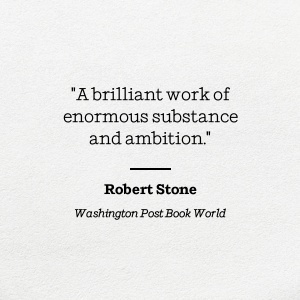

Full description not available



L**N
Superb, profound and insightful
Neil Sheehan’s work “A Bright Shining Lie” is a deeply profound and insightful biography of the people and events that drew the U.S. into the national morass of Vietnam. His detailed references to the painful truths ignored by the highest levels of military leadership documents the many fantasies associated with the strategic thinking of American military planners during the 1962 to 1963 period.By means of the author’s descriptive reporting, the reader, or as in my case, the listener, can envision the very personal reality of living through circumstances that are beyond one’s capacity to imagine as being possible! One learns what can only be realized through first hand experience as the author enables you to fully grasp the amazing insiders story of the coup d’etat initiated by President John F.Kennedy against Ngo Dinh Diem, President of South Vietnam.This special work weaves together the Who, What,, When, Where and Why of America’s ill fated involvement in Vietnam.The historical accuracy of the author’s reporting will grab you by the belt and challenge every instinct of common sense you can muster!His step by step accounting of the insertion of U.S. ground troops into the fight to salvage the wishful hopes of American political and military leaders abruptly ends, and the author goes back in time, to illustrate the life and harsh upbringing of John Paul Vann under difficult family circumstances. This biographical sketch carefully traces John Paul Vann’s journey into manhood, his new life as a family man while in the Army, and elaborates on the culture of the era.The Korean War lurches John Paul Vann into the deadly arena of wholesale slaughter. The author elaborates on the willful lack of objectivity of American political leadership, and the horrific consequences this incompetence had on U.S. combat forces. Family matters of a medical nature extracted John Vann from further combat early in the War and facilitated his return, against his wishes, to the U.S. with his family. Once again, the author highlights the personal journey of John Vann, emphasizing his pretense of a mature relational morality and the deliberate neglect of his family. Fundamentally, John Vann lacked the emotional instincts of a family man. His own interests led him back to Vietnam, where the environment of the fight fits the zeitgeist of his own constitution.In this contentious environment, the author refers to the “corruption and parasitic nature” of Saigon itself; “a malignancy that poisoned the entire system of government.” As the author states, “a vacuum of leadership, and a confrontation were the circumstances in which he, ”John Vann, “thrived.”The author then adds his view that Vietnamese communism was about Nationalism and to a government not obliged to serve the interests of the U.S. This sense of Nationalism was opposed to the Americanizing of the Vietnamese culture and its politics.Being in the field, with the people, in the middle of the conflict, was JohnVann’s niche in Vietnam. From this vantage point, John Vann developed his theory of “harnessing the revolution”, an idea which drew upon the fragile control of the Viet Cong over the population and the very real and deep seated contempt and resentment the people had for the corrupt Saigon government and the abuse they experienced from the Army of South Vietnam(ARVN). The author weaves together the frank exchange of ideas between John Vann and top military and civilian leaders responsible to policy makers in Washington.The author provides a detailed account of how and why recommendations for new forms of social and political leadership to win over the people of South Vietnam in order to gain their support of an American sponsored government were arbitrarily dismissed by top U.S. commanders. As interesting, and revelatory, as this accounting was, it pales in comparison to the author’s skillful conveyance of real life events in a manner that transports you directly into the scene of the action. He describes a series of intriguing and deadly ambushes motivated by causal factors, which were creating the war. So compelling were the scenes being described that one could feel the sense of terror being experienced by the human targets of these assaults.What then followed was the horrifying encounter of the 1st Battalion, 7th Cavalry, 1st Air Cavalry with the North Vietnamese 33rd Regiment in the Ia Drang Valley on November 14, 1965; a battle that should have been a reality check for President Lyndon Johnson and Robert McNamara, the Secretary of Defense. The hard fought battles that followed could have persuaded the President that there was ample evidence to reassess the assumptions of his political and military leadership councils. The “war of attrition” was just getting started. Big Time.The industry, institutions, and infrastructure associated with the buildup of U.S. military forces in South Vietnam was massive. The enormous scale of the American mega involvement in South Vietnam transformed Vietnamese society into an alien Amerasian hybrid. The rich Asian culture was being buried under layers of corruption generated by American aid and assistance.The author provides numerous examples of the parasitic nature of the Saigon government having tentacles extending throughout South Vietnam; the graft affecting every aspect of government activity, reaching all the way down to the local level.In the military arena, the incredible battles against the jungle forts around Khe Sanh in April and May 1967 reminded Marine General Lew Walt of the fighting at Peleliu in 1944, where the Marines fought against the Japanese in steel reinforced concrete bunkers and rock caves in the hillsides of the Pacific Islands during WW II.“The Vietnamese communists wanted violent, close quarters combat because it tended to diminish the effectiveness of air and artillery”, warned Marine General Krulak. The author’s description of these battles is breathtaking.Referring to the regions where major battles had taken place, the author states that “Westmoreland had convenienced his enemy.” The areas in which U.S. lives were lost tell this story.In his desire to fight a war of attrition, General William Westmoreland was fighting the enemy’s war. The North Vietnamese gave him the opportunity he had hoped for; to commit large unit forces to an all out war.A series of studies done by associates of Robert McNamara showed that the Viet Cong and the North Vietnam Army ( N.V.A. ) initiated fighting with the Americans more than 80% of the time, on a battlefield that surprised the U.S. forces more than 85% of the time.In May of 1967, Robert McNamara gave LBJ a memorandum that stated: “The President could not win the war in Vietnam and ought to negotiate an unfavorable peace.”North Vietnam’s military Commander in Chief General Vo Nguyen Giap writes an article published in Military People’s Daily in September 1967 elaborating on his strategy to deploy N.V.A. troops to the border areas of South Vietnam to maximize the natural advantage of the camouflage offered by the jungle forests and to draw U.S. ground troops into the meat grinder of the jungle battlefield.The C.I.A. obtains a copy of this article and broadcasts it on radio via “Foreign Broadcasting Information Services.”The second battle for Khe Sanh, located in the far northwest corner of South Vietnam begins in mid January of 1968. “It was a ruse” to deceive General William Westmoreland. On January 31, 1968, the assault of communist forces begins throughout South Vietnam.The Tet Offensive of 1968 alerts the American public to the very serious military situation occurring in South Vietnam. The public now realized what the Johnson Administration did not want it to know.“Americans watched the country they were supposed to be rescuing being burned down and blown apart on television, in color.” Neil SheehanA very insightful strategic assessment by John Vann was elaborated upon by the author. The numerous casualties incurred by the Viet Cong, and the extensive relocation of refugees from the countryside to the ballooning cities changed the conditions of the war. The “Vietnamization” of the war was to be initiated in earnest by newly elected President Richard Nixon. “It’s your policy”, Henry Kissinger, Secretary of State, told Vann “in an exaggerated compliment.”The peace talks between the United States and the North Vietnamese began in January 1969. The war rumbled on.Battle plans and actual battles are carefully described in detail as events in the war unfolded. The complex battlefield strategies of the N.V.A. are sketched out in the effect their assault had on the ARVN. The time had come for the Army of the South to confront the Army of the North. The ARVN collapsed. Chaos ensued. The descriptions are horrific. Wave after wave of B-52 strikes blunted the tip and broke the shaft of the N.V.A. spearhead into the South.Having secured the victory of stopping the invasion from the North, and knowing he had helped those that he recognized as needing his help the most, John Paul Vann was in a celebratory mood.On June 9, 1972, this man of valor is thrown from his helicopter in a fiery crash. His body, laying broken, but not burnt, amongst the graves of Montagnard dead in a communal burial site on the edge of a hamlet; carved wooden figures nearby “staring into space”.“The Paris Agreement of January 1973 removed the advisors and the residual U.S. military forces propping up the Saigon side, while leaving the NVA in the South to finish its task.” Neil SheehanSummarySo many people and events, and the complex circumstances associated with them, are referred to, written about, and described in this real life narrative that it is impossible to fully comprehend the role each had played in the overall involvement of the American war in Vietnam.History demonstrates that the Eisenhower Administration used the ideological competition between the two super powers during the period of the Cold War to justify turning the southern territories of Vietnam into a new national state. This redefinition of foreign lands as an independent state obligated the U.S. to defend its borders. The military prestige of the U.S. would now be determined by future military events.The Officers who had fought so bravely to win WWII, now top Generals commanding the world’s most powerful Army, Air Force and Navy, could not bring themselves to imagine that the militarily frail Vietnamese insurgency, called the Viet Minh, could ever amount to more than a brush fire. The certainty of U.S. dominance was to be taken for granted.President Eisenhower had Ngo Dinh Diem established as President of this new U.S. Protectorate, South Vietnam. The Army of South Vietnam was funded, trained, equipped, and advised by the U.S. When they needed weaponry, they received it, i.e. artillery, helicopters, armored personnel carriers, airplanes, coastal defense, etc. America would determine the fate of this new nation.This new military adventure into Southeast Asia was, American leaders were convinced, sure to be a small demonstration of the superiority of American power on the world stage.The big move into the big war was initiated by President Lyndon Baines Johnson.The adverse conditions that prevented the people of Vietnam from realizing the security they needed to assure them of their personal protection persisted throughout the war and were, in many cases, actually aggravated by what the U.S. command was willing to do. The unobserved firing of artillery into the countryside, for example, was something that Vann argued should be stopped.The wholesale corruption of the Saigon regime interfered with the availability of goods and services, often accessible only to those already in privileged positions.These conditions were not those that the American military command wanted to confront, or acknowledge as having a serious detrimental impact on the rejuvenation of a society in the midst of a social revolution.If this war was to be fought by Americans, it would be won or lost in the arena of combat.Fighting the communists on a military battlefield proved to be more alluring than confronting government corruption on the political battlefield.The Viet Cong had other ideas. They were willing to become the masters of their own destiny.This monumental work was read by Robertson Dean, courtesy of Audible Books. The author’s exemplary effort to contribute to the full story of the American intervention into Vietnam was complimented by Mr. Dean’s communicative acumen. His reading was engaging and persuasive, capturing the imagination with an enthusiastic vigor and a serious sense of concern for the historic importance of the author’s accounting. I was absorbed, once again, into the experience of being there.(Review by Dennis Berlin)
M**E
A Bright, Shining Masterpiece
I have many, many history books. This is one of the best books I've ever read, one of the best history books I've ever read, AND the best book on the Vietnam war that I have read. I wish most historians could write this well and engagingly, and I wish most journalists who try their hands at history could be this thorough and obsessed with details of a time, place, and war.Sheehan approaches his topic of American involvement in Vietnam by using one person, John Paul Vann, as his central focus, and then pulling in many bits of background and related events to tell how the American endeavor failed. We see the war at the various points where Vann was involved, from the beginnings as an Army advisor, to the end in his quasi-military role. Not only is the history amazing, the details (especially on military matters) just right without being exhausting, but the personal details surrounding Vann are engrossing. It is so detailed that I had to wonder how Sheehan found out when and where Vann made love, as Vann does so often in the book to so many different women.Sheehan's broader themes are difficult to sum up because, as a journalist, he tends to lay out the facts and let us draw the conclusions. He focuses on exposing the characters and wrong-headedness of American policy and practice in Vietnam, from the White House to the battlefield. The main theme is lying, and Vann is representative of that. Vann passes himself off as a success, but has a failed personal life. He lies to his wife, he lies to the women he seduces, he lies to David Halberstam and the rest of the press corps. Daniel Ellsberg, a friend of Vann's and just as steeped in the conflict, also has a difficult personal life but goes in another direction on the war; apparently, Sheehan sees Ellsberg as a counterpoint to Vann. Ellsberg, who made Pentagon Papers public (through Sheehan, it turns out), tries to tell the truth; Vann cannot. Vann lies throughout his life, and his worst failing -- the failing of everyone in Vietnam who thought the US could win in spite of evidence to the contrary -- is that he lied to himself.The focus on lies is a quintessential journalistic obsession, and sometimes the book drips with a caustic, cynical view of just about everyone in the book (even fellow journalists, such as Halberstam). If they aren't liars or self-deluded in some way (Vann, Westmoreland), they are dupes of liars (Annie, the American public). Too, I would have liked to have seen more analysis of why the US got involved in the first place, and whether the Cold War beliefs were fallacies or not. The focus on Vann, then, is sometimes limiting, because he was focused on winning (the how of the war), not on policy (the why of the war), and through Vann Sheehan shows how the war failed. Overall, the book has a certain rawness to it that makes it feel like it was written in 1972, and certainly the emotion is palpable. To call something a "lie" is, indeed, an accusation tinged with emotion, as opposed to calling something, for example, "A Bright Shining Bad Idea" or "A Bright Shining Really Big Mistake."On a practical note, the page count is a bit daunting but worth it. I had to take a break of a few months before I came back to it to finish the last section. The frequent breaks throughout the prose do help with pace. That said, I have found few books (fiction or nonfiction) that have been so consistently well written, free of errors, and captivating on every page. The maps were also helpful to understanding the military action, which Sheehan is a master of relating. For all of those reasons, I will read this again when I have to understand how the US endeavor in Vietnam failed.
D**N
A MUST READ IF YOU WANT TO UNDERSTAND THE VIETNAM WAR
All I can say is if you haven’t read this book that took Neil Sheehan 16 years to write, well, you don’t know the REAL reasons why we lost the Vietnam War. This book is one for the ages. I read it when it first came out in ‘88 and being a 75 year old Vietnam veteran I wanted to read it one more time before I check out. It seems more powerful and compelling than when I first read it 37 years ago.
Trustpilot
1 day ago
1 week ago